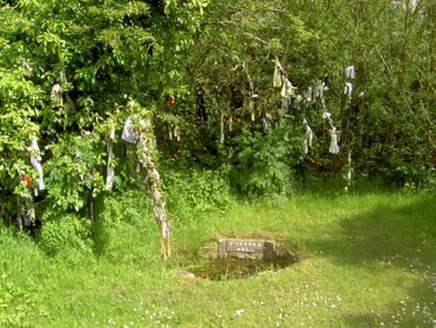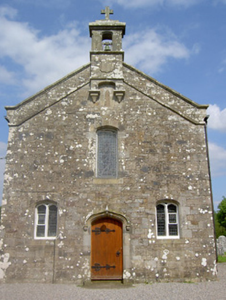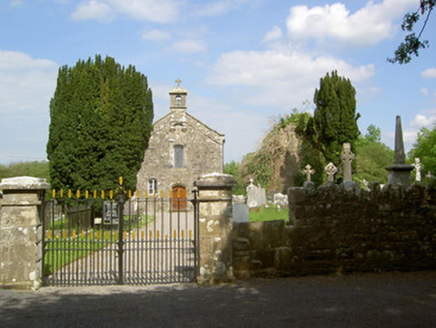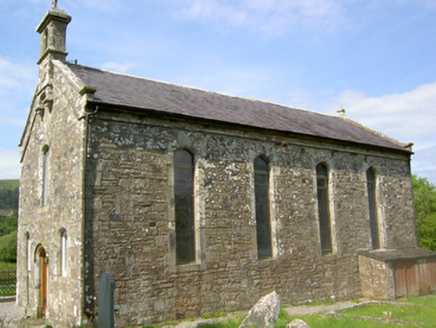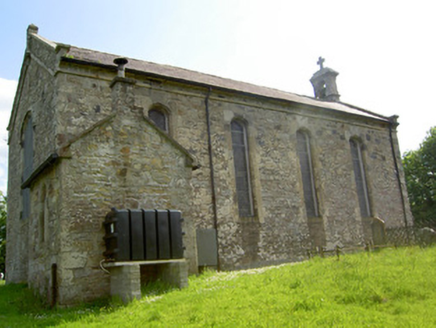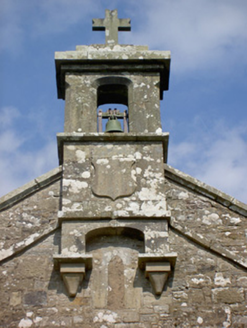Survey Data
Reg No
22207305
Rating
Regional
Categories of Special Interest
Archaeological, Architectural, Artistic, Historical, Social
Original Use
Church/chapel
In Use As
Church/chapel
Date
1835 - 1840
Coordinates
187188, 129415
Date Recorded
09/06/2005
Date Updated
--/--/--
Description
Freestanding gable-fronted Church of Ireland church, built 1837-8, having four-bay nave elevations with pitched roof vestry to north elevation, and lean-to boiler shed to south. Pitched slate roof with sandstone ridge tiles and coping to gables, elaborate cut sandstone bellcote with cross finial to gable-front, partly projecting and supported by corbels, with cut sandstone finial to east gable. Cast-iron rainwater goods. Snecked limestone walls with cut sandstone eaves course, and with string course below eaves and running up gable-front, intersected on latter by decorative carved stonework supporting bellcote. Tudor-arched window openings to lower gable-front, flanking entrance door, with cut sandstone chamfered block-and-start surrounds and stained glass, having timber mullioned paired Tudor-arch heads to lights. Tudor-arch east window has sandstone surround, moulded head and hood-moulding. Chamfered Tudor-arched door opening with carved sandstone hood-moulding and timber battened door with decorative cast-iron hinges and handle. Square-headed door opening to vestry, also having timber battened door with decorative cast-iron hinges. Remains of ruined medieval church to site. Lawned graveyard, including Massey family plot and Givens family mausoleum. Holy well to site, known as both St John's Well and St Sedna's Well. Roughly dressed sandstone boundary walls, incorporating stiles and cut sandstone piers, having cast-iron gates.
Appraisal
This attractive church was built as the Massey family memorial chapel, in a site with the ruins of a medieval church. The façades of the building are greatly enlivened by the skilfully-carved detailing of the hood-mouldings and ornate bellcote. Situated in a mature graveyard on a slightly elevated site in the landscape, the character of this church and its surroundings has changed little since the early nineteenth century.
